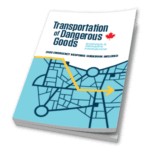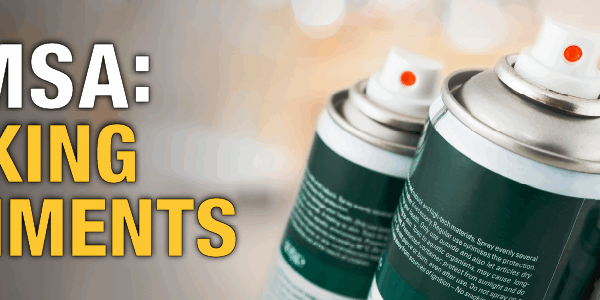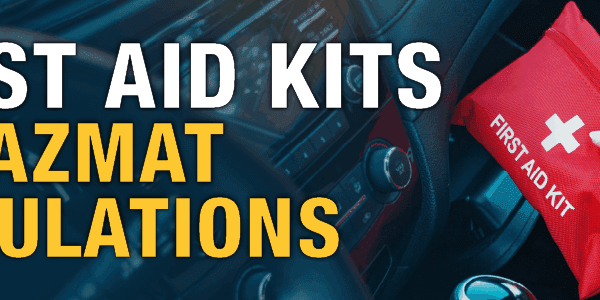
One day in the future, you may find yourself stranded somewhere along the highway with an empty fuel tank. You pull out your mobile phone and fire up an app – but it’s not for a driver to come and rescue you. You let the app recognize your location and wait. Within a few minutes, you hear a gentle whirring and a drone appears in the distance. Suspended beneath it is a small jerrican of gasoline. After making sure you’ve received your supply, it bobs and heads off back to the nearby gas station that sent it.
This may sound like science fiction, but it’s closer than you’d expect. Transport Canada is studying a new way of delivering dangerous goods using drones, or what they refer to as “Remotely Piloted Aircraft Systems” (RPAS). These are probably the next big thing in “contactless delivery” of non-dangerous goods – big corporations such as Amazon and Walmart are expected to invest heavily in the technology. Instead of waiting days (or longer) for deliveries, common stocking items could be delivered in under an hour.
But up to now, most safety studies of drone delivery have concentrated on the safety of the drone itself. The next step is to consider cargos not of inert materials but of actual dangerous goods. Commerce and industry have many products that are technically dangerous, which would lend themselves to fast delivery by drones. What if, discovering your remote-control batteries were dead, you could have a pack of AAA cells delivered to your door in a few minutes? Or what if, at a remote site, a mining company wants to send out a sample for testing without the expense of calling for an aircraft? Or if they need to bring in vaccines packed in dry ice? The advantages extend beyond convenience and cost – in emergencies, drones can ensure rapid delivery of essential supplies and venture into areas that may be too dangerous for humans.
Transport Canada intends to be proactive and be prepared for such eventualities. In an online information session, Transport Canada spokesperson Peter Coyles described how they plan to take a “crawl, walk, run” strategy. The first step will start with low-risk dangerous goods that would not likely endanger the public, such as equipment containing lithium batteries or shipment kept cold with dry ice. Then, once safety has been established with these products, companies may branch out into higher-risk dangerous goods if they are certified as drone dangerous goods carriers.
To do this, Transport Canada must amend the “Transportation of Dangerous Goods Regulations“ (TDG). In a planned amendment to Part 12, Air Transport, a section would be added to permit drone transport of certain low-risk dangerous goods such as hand sanitizers, medicines, dry ice, magnetized materials, or lithium batteries (either as spares or in equipment). Samples for medical evaluation with no or minimal risk of containing pathogens would also be permitted.
Further, the proposed changes would allow drones to be used for other things than commercial deliveries of dangerous goods. They might, for example, be used as a non-manual method of delivering explosive charges for avalanche control or breaking up ice jams. Drones could be used to assist in fighting forest fires. In agriculture and forestry, they could deliver fertilizers or pesticides in a much more targeted manner than we can now. If new applications arise that are not on the original list, Transport Canada would be prepared to issue permits on a case-by-case basis once safety is assured. It’s likely that the demand for dangerous goods by drones will expand rapidly once we have a regulatory infrastructure that allows it.
Safety is, of course the main priority, so studies will be undertaken on issues such as packaging requirements. It appears that in many cases, a drone crash from low height and speed would actually put less stress on a package than a highway or rail crash involving higher speeds and greater impact forces.
All this study is not, of course, taking place only in Canada. Transport Canada is working closely with the International Civil Aviation Organization (ICAO) at the UN level. While domestic Canadian regulations allow more flexibility in Part 12 of TDG than the ICAO Technical Instructions for the Safe Transport of Dangerous Goods by Air, leveraging the work that is being done on the issue worldwide will help us create the safest possible rules for drones.
When can we expect to see drones on the horizon (figuratively as well as literally)? Peter Coyles said there is likely no work going to get done on the topic in 2021, as Transport Canada still struggles with the regulatory requirements of COVID and its aftermath. The next year, 2022, however, may see rules on dangerous goods by drone introduced in an amendment to TDG Part 12.
For the time being, although dangerous goods may be on the “do not fly” list for drones, remember that drones themselves may contain dangerous goods. Most drones run on lithium batteries, but some are powered by combustible liquids such as gasoline. Keep this in mind if you plan to ship a drone or supplies for one (rather than have it transport itself to its desired destination). And don’t forget that to fly your drone, you may require a drone pilot certificate.
Do you have questions about shipping battery-powered equipment such as drones? Are you interested in keeping track of Transport Canada’s plans? Contact ICC Compliance Center here at 888-977-4834 (Canada) or 888-442-9628 (U.S.), and ask for one of our Regulatory Experts. We can advise you on current and upcoming regulations.
Sources:
Canada’s “Transportation of Dangerous Goods Regulations”
Transport Canada, “Flying your drone safely and legally”
International Air Transport Association (IATA), “Unmanned Aircrafts Systems (USA) – Drones”
ICAO, “Use of drones in Humanitarian Activities”
Stay up to date and sign up for our newsletter!
We have all the products, services and training you need to ensure your staff is properly trained and informed.
 Canadian TDG Publications |
 ICAO Publications |






 ICC USA
ICC USA ICC Canada
ICC Canada